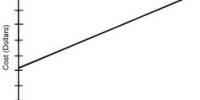Generally Accepted Accounting Principles (GAAP):
1. Generally Accepted Accounting Principles (GAAP) is a term used to refer to the standard framework of guidelines for financial accounting used in any given jurisdiction which are generally known as Accounting Standards. GAAP includes the standards, conventions, and rules accountants follow in recording and summarizing transactions, and in the preparation of financial statements.
2. The Generally Accepted Accounting Principles, or GAAP for short, are a set of accounting rules used to standardize the reporting of financial statements in the United States. Understanding GAAP can help you make better investing decisions.
3. Generally accepted accounting principles (GAAP) are the basis of financial accounting and reflect federal financial accounting standards.
4. GAAP is a collection of methods used to process, prepare, and present public accounting information. GAAP is overall very general in its methods, as it needs to be somewhat applicable to many different types of industries. GAAP can be principle-based or specific technical requirements. Due to the fact that in many instances it is flexible and general, most industries in the United States are expected to follow GAAP principles.
Rules:
Financial Accounting is information that must be assembled and reported objectively. Third-parties who must rely on such information have a right to be assured that the data are free from bias and inconsistency, whether deliberate or not. For this reason, financial accounting relies on certain standards or guides that are called “Generally Accepted Accounting Principles” (GAAP).
Principles derive from tradition, such as the concept of matching. In any report of financial statements (audit, compilation, review, etc.), the preparer/auditor must indicate to the reader whether or not the information contained within the statements complies with GAAP.
- Principle of regularity: Regularity can be defined as conformity to enforced rules and laws.
- Principle of consistency: This principle states that when a business has once fixed a method for the accounting treatment of an item, it will enter all similar items that follow in exactly the same way.
- Principle of sincerity: According to this principle, the accounting unit should reflect in good faith the reality of the company’s financial status.
- Principle of the permanence of methods: This principle aims at allowing the coherence and comparison of the financial information published by the company.
- Principle of non-compensation: One should show the full details of the financial information and not seek to compensate a debt with an asset, revenue with an expense, etc.
- Principle of prudence: This principle aims at showing the reality “as is”: one should not try to make things look prettier than they are. Typically, revenue should be recorded only when it is certain and a provision should be entered for an expense which is probable.
- Principle of continuity: When stating financial information, one should assume that the business will not be interrupted. This principle mitigates the principle of prudence: assets do not have to be accounted at their disposable value, but it is accepted that they are at their historical value (see depreciation and going concern).
- Principle of periodicity: Each accounting entry should be allocated to a given period, and split accordingly if it covers several periods. If a client pre-pays a subscription (or lease, etc.), the given revenue should be split to the entire time-span and not counted for entirely on the date of the transaction.
- Principle of Full Disclosure/Materiality: All information and values pertaining to the financial position of a business must be disclosed in the records.
- Principle of Utmost Good Faith: All the information regarding to the firm should be disclosed to the insurer before the insurance policy is taken.
GAAP, not the jeans, is the Generally Accepted Accounting Principles used to guide the accounting system we use today. Although not laws, the GAAP are as close as you can get, and the accounting industry follows a code of ethics that incorporates the use of the GAAP for all subsequent transactions. Now, on paper and in theory this sounds really good, doesn’t it? Does it actually work that way? No, and you have evidence to support this fact in the corporate scandals that we witness on a continual basis.
But let’s take a more in-depth look at the GAAP, why it originated, how it is supposed to be used, and how it relates to our world today.
The GAAP was not formally founded at all. During the course of history, since the Franciscan monk, Luca Pacioli wrote his math book that turned out to be the foundation for all accounting procedure, certain procedures and principles became widely used and were accepted by all businesses and accountants as the “norm”. From there, the generally accepted accounting principles just became a formal set of procedures everyone used.
Then came the Great Depression. Many companies and businesses went bankrupt. Upon closer examination and further scrutiny, it was discovered that these companies were not healthy, profitable companies. The reported profits and healthy operations were bookkeeping tricks, and that basically, their financial statements were lies. This was one of the lowest points in history for accountants.
What did we realize at this point? Many of the accountants involved in these fraudulent activities, testified to the courts, that these procedures were “generally accepted accounting principles”. At this juncture, the courts and many professionals realized something must change; there must be a better way to govern and regulate accounting activity.
During this time of transition and accountability, the formal accounting system became self-regulated and formed the American Institute of Certified Public Accountants. Although this governing body was not the ultimate solution, it was a beginning. Next came the Accounting Principles Board, then the Financial Accounting Standards Board (FASB) in 1973 and this is the governing body still in place today.
Is the system perfect? No, we still have much to correct and regulate; this is evidenced by the corporate scandals of today, such as HEALTHSOUTH and Enron. But you must look at the bigger picture: as accountability and financial systems grow and evolve, the accounting principles we use grow and evolve also. The personal accounting practices in use are extremely regulated and the principles in use are extremely regulated and work effectively. There is no widespread misuse of accounting procedures in our lower level accounting systems; the abuse is more prevalent in our corporate accounting departments under the direction of the corporate officers, such as the CEO, CIO, and COO.
The FASB works diligently to correct system abuses, incorporate ethical regulations across the board, and keep a watchful eye on all aspects of the accounting process. What can we, as citizens do? Very little in the broad sense; but educating ourselves about accounting principles, conducting our personal business within these guidelines and upholding moral and ethical financial practices will go a long way in ensuring that our corporate counterparts are held accountable as well.















